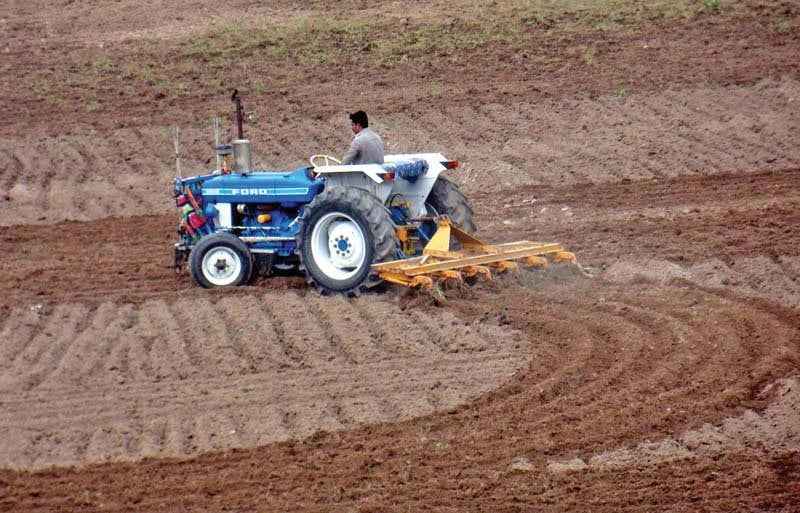Introduction: Machines That Matter
For most people, a shiny new car is considered a symbol of success. But for a farmer, true triumph is defined by the machine he drives across his fields. The tractor, the harvester, the drill—these are not just tools but lifelines. In Pakistan, however, the machinery industry that fuels our “agrarian economy” remains crippled by outdated practices, poor policies, and chronic neglect.
Despite agriculture being the backbone of our economy, the sector is lagging behind in mechanization, leaving farmers to work harder but reap less. This blog explores the state of agricultural machinery in Pakistan, its challenges, and the urgent reforms needed to put Pakistani farming back on track.
The State of Mechanization in Pakistan
- Agriculture contributes 24% of Pakistan’s GDP and employs nearly 37% of the labor force.
- Yet, farm mechanization remains one of the weakest links.
- Growth has slowed to under 3% annually since 2000, compared to over 4% in earlier decades.
- Agricultural productivity per worker has been stagnant for 30 years, growing at just 0.7% per year—far below regional averages.
Key industry struggles include:
- Liquidity crunches: Tractor manufacturers like Millat Tractors have suspended operations due to stuck sales tax refunds (over Rs 8 billion).
- Supply chain gaps: Farmers often lack access to spare parts, maintenance, and reliable distribution channels.
- Policy missteps: Importing five-year-old tractors instead of investing in local manufacturing weakens local industry and drains foreign reserves.
Why Mechanization Matters
Farm machinery touches every step of cultivation:
✅ Land preparation → Tractors, power tillers
✅ Seeding & planting → Seed drills
✅ Crop management → Sprayers, irrigation systems
✅ Harvesting & threshing → Harvesters, threshers
✅ Post-harvest handling → Balers, shredders
Mechanization not only saves labor and input costs but also:
- Reduces post-harvest losses
- Improves yield per acre
- Enhances efficiency and sustainability
- Raises farmer income
Challenges to Farm Mechanization in Pakistan
-
Outdated Manufacturing
Most farmers rely on second-hand or decades-old tractors prone to breakdowns. Instead of investing in parts and innovation, policy has encouraged used tractor imports—an expensive, inefficient solution. -
Weak R&D
Unlike countries such as Holland (where robots milk cows and handle crop operations), Pakistan invests very little in agri-tech research. Our education and training systems also fail to produce skilled engineers who can develop and maintain advanced farm machinery. -
Limited Financing Options
Farmers often lack affordable credit or leasing options to purchase machinery. High upfront costs keep modern equipment out of reach for smallholders. -
Fragmented Supply Chain
The absence of a centralized system for distribution and repair makes access to parts costly and inconsistent, especially in rural areas.
How Farmers Can Begin Mechanizing
Imagine a young farmer deciding to modernize his family farm:
- Step 1: Assess farm needs → Identify whether plowing, planting, or irrigation takes the most time.
- Step 2: Start small → Invest in a basic tractor or plow, then expand to seed drills and harvesters as results show.
- Step 3: Train workers → Ensure safe usage, regular maintenance, and basic troubleshooting.
- Step 4: Scale gradually → Add irrigation systems, sprayers, and threshers to boost efficiency.
Even incremental steps in mechanization can halve the labor required and double crop output over time.
Machinery Needed for Farm Mechanization in Pakistan
- Tractors – The backbone of modern farming
- Power tillers – For smallholders with <2 hectares
- Harvesters – For wheat, rice, sugarcane
- Seed drills – Reduce seed wastage, ensure precision
- Sprayers & irrigation systems – Improve water and fertilizer efficiency
- Threshers & balers – For post-harvest processing
- Shredders & pumps – For soil health and irrigation
The Way Forward: Building a Mechanized Future
To secure Pakistan’s agricultural future, the following steps are essential:
Policy Support → A national mechanization plan with incentives for local manufacturing.
R&D Investment → Fund agri-tech innovation and university-level training.
Financial Access → Expand leasing, microcredit, and subsidy schemes for smallholders.
Private-Public Partnerships → Collaborate with local and international companies for technology transfer.
Awareness & Training → Strengthen extension services to train farmers in safe and efficient machine use.
Conclusion
Mechanization is not a luxury—it is a necessity for Pakistan’s survival as an agrarian economy. Without modern machines, our farmers will remain stuck in low-productivity cycles, and Pakistan will continue losing ground to regional competitors.
The choice is clear: either invest in farm machinery and modern practices today or face a food and economic crisis tomorrow. For Pakistan’s farmers, the real “luxury car” is not parked in a driveway—it’s the tractor plowing their fields, driving the nation toward food security and prosperity.
1. What is farm mechanization in Pakistan?
Farm mechanization means using modern machines like tractors, harvesters, and drills to make farming more efficient, reduce labor, and improve yields in Pakistan’s agriculture sector.
2. Why is farm mechanization important in Pakistan?
It helps farmers save time, reduce costs, increase crop productivity, and compete with regional agricultural economies. Without mechanization, productivity remains stagnant.
3. What are the main challenges in farm mechanization in Pakistan?
High machinery costs, lack of financing, weak R&D, outdated policies, and limited spare parts availability are major challenges.
4. Which farm machinery is most needed in Pakistan?
Tractors, seed drills, harvesters, threshers, irrigation systems, and power tillers are essential for smallholders and large-scale farmers.
5. How can Pakistan improve agricultural mechanization?
By investing in local manufacturing, offering subsidies/credit, supporting R&D, training farmers, and promoting private-public partnerships in agri-machinery.





